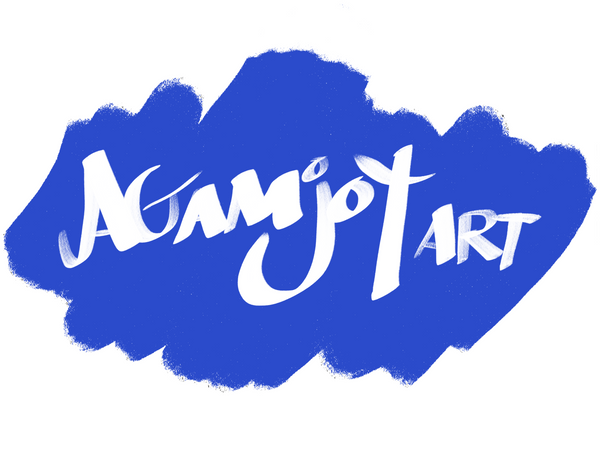Luxury Art Investing: Understanding the Market and the Works of Agamjot Singh
Share
Luxury art has always been a source of fascination and inspiration, attracting connoisseurs and collectors from all over the world. From the masterpieces of old to the avant-garde contemporary artists, luxury art encompasses a diverse range of styles and mediums that continue to capture the imagination of art lovers everywhere. But what exactly is luxury art, and what makes it such a worthwhile investment? Art has been a significant part of human culture for centuries, and luxury art has become a valuable commodity in today's market. Investing in luxury art can provide not only a financial benefit but also the enjoyment of owning unique and valuable works of art. In this article, we will explore the history, characteristics, and market for luxury art, and introduce you to a rising star in the art world: Agamjot Singh.
Definition of Luxury Art
Luxury art refers to high-end, high-quality works of art that are typically made with premium materials, intricate design, and exceptional craftsmanship. These works of art are often unique and one-of-a-kind, and are highly sought after by collectors and art lovers alike.
The luxury art market encompasses a wide range of works of art, including paintings, sculptures, and other types of decorative arts. The market is constantly evolving, with new artists emerging and established artists reaching new heights of popularity. The market is also influenced by economic trends, cultural events, and the tastes and preferences of art collectors.
Key Art Movements and Their Influence on Luxury Art
Throughout history, various art movements have had a significant impact on the luxury art market. From the Baroque and Rococo styles of the 17th and 18th centuries to the Impressionist and Modernist movements of the 19th and 20th centuries, these movements have influenced the style and subject matter of luxury art and continue to shape the market today.
Luxury art is often characterized by its use of high-quality materials, such as precious metals, expensive pigments, and hand-woven fabrics. These materials are carefully chosen and
expertly crafted to create works of art that are not only beautiful but also long-lasting.
Another defining feature of luxury art is the attention to detail and intricate design. From the delicate brushstrokes of a painting to the intricate carving on a sculpture, these works of art are designed to be viewed and appreciated up close, revealing their beauty and craftsmanship in every detail.
Finally, luxury art is often prized for its originality and uniqueness. These works of art are one-of-a-kind creations that cannot be duplicated or replicated, making them truly special and valuable.
To successfully invest in luxury art, it is important to research market trends and demand. This includes staying up to date with exhibitions, auctions, art advisors and news. Before investing in luxury art, it's essential to research market
trends and demand. Familiarizing yourself with established artists and their works, as well as keeping up with exhibitions, auctions, and industry news, can provide insight into the value and significance of a particular artwork. Luxury art is often sold at auction houses or reputable galleries, and it's essential to understand the market to negotiate the purchase of a piece successfully.
Agamjot Singh: An Artist to Watch
Agamjot Singh is a contemporary artist who has been gaining recognition in the luxury art world. His style is characterized by vibrant colors and bold lines, drawing inspiration from his Sikh/Metis lifestyle and Canadian background. Some of his notable works include "Gyatso" "Desert Road" and "Sunrise on the farm" These works explore themes of identity, spirituality, and cultural heritage, and
they have been praised for their vivid imagery and emotional
depth.

Investing in Art
Investing in luxury art can be a lucrative and rewarding experience. Not only do these works of art provide a beautiful and unique addition to your home, they can also appreciate in value over time, providing a potentially profitable return on investment. The history of the art market is a long and complex one, with its roots stretching back to the Renaissance. During this time, art was seen as a symbol of wealth and status, and was collected by royalty and the wealthy elite. Over time, the art market grew and evolved, and by the 19th century, it had become a thriving and highly competitive industry. Investing in luxury art can provide a potential for financial gain, but it's important to remember that art is a long-term investment. It's also essential to enjoy owning the artwork, as the value of a piece can fluctuate over time. Building a diverse collection can help mitigate risk, and investing in emerging artists like Agamjot Singh can provide a unique opportunity for significant returns on investment.
Building Your Collection of Luxury Art
Finding a reputable gallery or dealer is crucial when building a collection of luxury art. They can provide guidance on the authenticity and provenance of a piece and help navigate the market. Negotiating the purchase of a luxury artwork can be a
complex process, and it's essential to have a clear understanding of the artwork's value and significance.
Conclusion
Investing in luxury art can provide both financial benefits and the enjoyment of owning unique and valuable works of art. Understanding the market for luxury art, the works of established and emerging artists, and building a diverse collection are
essential for successful art investment. Agamjot Singh is an artist to watch in the luxury art market, and his works provide a unique opportunity for significant returns on investment while also celebrating culture, color, impressionism and expressionism.
